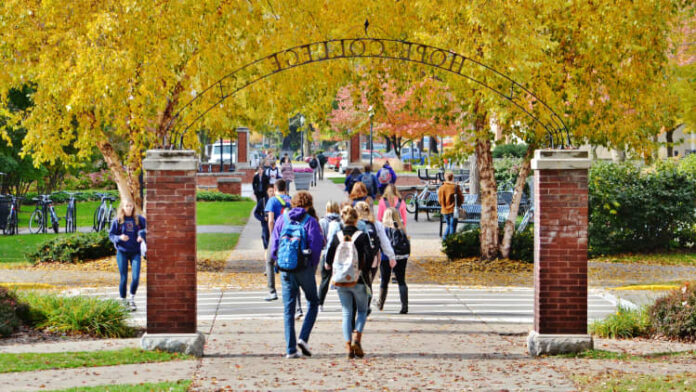Row of townhouses in Alexandria, Virginia
Grace Cary | moment | Getty Images
A new, cheaper repayment plan for federal student loan borrowers could bring another benefit: It could make it easier to become a homeowner.
The Saving on a Valuable Education, or SAVE, plan can cut borrowers' monthly payments in half, leaving many people with a $0 bill. The Biden administration officially rolled out “the most affordable repayment plan to date” over the summer.
“Switching to a repayment plan with a lower monthly payment can help a borrower qualify for a mortgage,” said higher education expert Mark Kantrowitz.
According to a 2021 report from the National Association of Realtors, half of student loan borrowers – including 60% of Millennial borrowers – who have not yet purchased a home say their educational debt is preventing them from doing so.
The SAVE plan could soon change that, say experts.
Smaller payments can help potential home buyers
Your debt-to-income ratio, typically calculated by dividing all your monthly debts by your monthly income, is a key factor in mortgage lending, said Christelle Bamona, senior researcher at the Center for Responsible Lending.
“Those eligible for SAVE will receive lower payments, which in turn will lower their debt-to-income ratio,” Barmona said. (Most borrowers should qualify for the SAVE plan as long as their credit is in good standing.)
More from Personal Finance:
“Budgeting out loud” is having a moment
Generation Z, Millennials want to invest – but many don’t
Americans can't pay an unexpected $1,000 expense
The rate of borrowers paying off their student debt and enrolling in SAVE could fall by anywhere between 1.5% and 3.6%, according to a new report from the Center for Responsible Lending.
That's how it happens.
For one, the SAVE plan increases the income excluded from your payment calculation from 150% to 225% of the poverty level. This means that the first approximately $33,000 of your income is not included in your monthly repayment, compared to approximately $23,000 for the other income-based repayment plans. (These numbers are for individuals. As family size increases, more income is protected.)
Starting in July, an even greater benefit of the plan will be available.
Instead of paying 10% of your discretionary income each month toward your student debt under the previous Revised Pay As You Earn (REPAYE) repayment plan, borrowers are only required to pay 5% of your discretionary income. (The SAVE plan replaced REPAYE.)
Kantrowitz provided some examples of how much borrowers' bills could go down.
Previously, someone making $40,000 a year would have a monthly student loan payment of about $151. Under the SAVE plan, their payment would drop to $30.
Likewise, someone making $90,000 a year could see their monthly payments shrink from $568 to $238, Kantrowitz said.
In the past, most mortgage lenders assumed that a borrower's monthly student loan payment was a certain percentage of their loan balance, even if the actual payment was lower, Kantrowitz said.
Fortunately, he said, “You are now relying on the actual loan payment.”
There's a catch: Many mortgage lenders don't use the $0 monthly student loan payment in their underwriting process, which the SAVE plan could mean for many borrowers. In such cases, lenders may still calculate your monthly obligation as a proportion of your total debt.
The Center for Responsible Lending wants to bring about this change.
“By not counting their monthly payments as $0 in the underwriting process, lenders are artificially increasing consumers’ monthly debt obligations,” Bamona said. This could potentially prevent millions of low-income Americans from taking out a mortgage, she added.
Saving for a down payment can be easier under SAVE
The SAVE plan could also help more people become financially empowered to buy a home, experts say. Because a lower monthly payment could allow them to put more money into their savings and reach their down payment goal faster.
Student loan borrowers buying a home for the first time may also be eligible for financial assistance, Bamona said, and should explore their options.
“First-time homebuyers could receive grants or down payment assistance programs provided by agencies and organizations in their state or community,” she added.

















